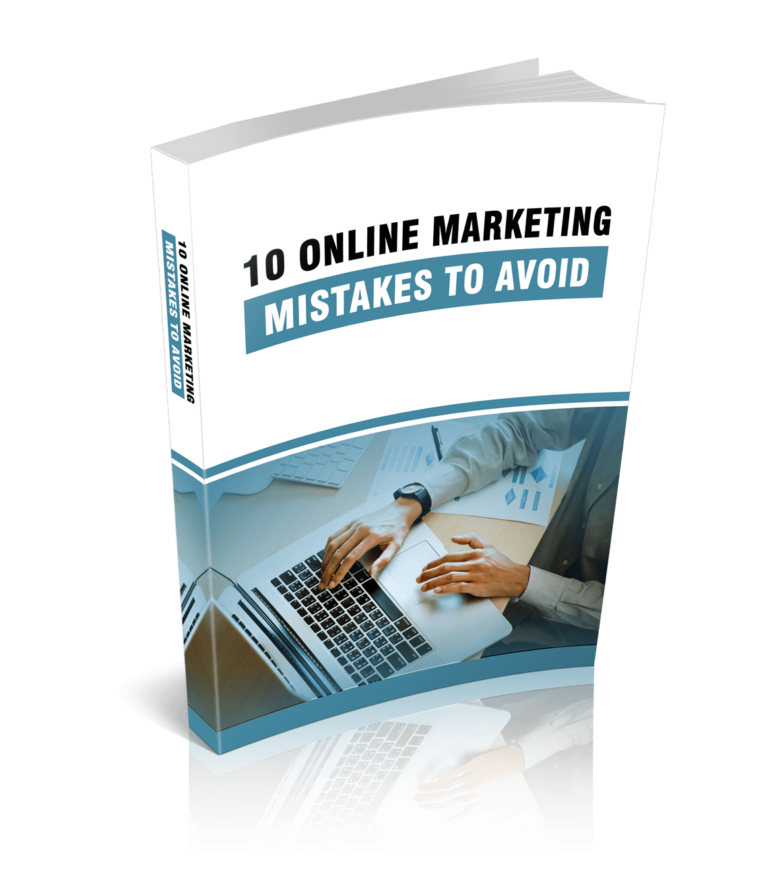As a business owner, you are constantly coming up with new ideas and thinking of ways to take your company to the next level. Generating ideas is easy but determining whether or not it’s worth pursuing is another story.
You don’t want to spend time or financial resources on something that won’t yield significant results because your goal as an entrepreneur is to invest in processes or things that are profitable and worthwhile.
So, if you have a big idea that needs evaluating, this step-by-step guide is for you. Use it to ensure profits and success.
SUBSCRIBE TO INCOME PATROL
Get updates on the latest posts and more from Income Patrol straight to your inbox.
IDENTIFY YOUR MAIN GOAL
The only way to succeed is to identify your main goal and determine whether or not it’s something that people are interested in. So, what do want to achieve? What is your main goal? And what steps are you going to take to reach it? Be as specific as you can when defining your goal. For example, if you want to start an e-commerce store, specify what sort of products you are going to sell, which e-commerce platform you are going to use, and the people you will market to.
This helps you to plan your steps, determine how profitable your business is, and come up with an effective marketing strategy that leads to higher conversions.
Make sure your business solves at least one problem to attract customers and ensure sales. What problem does your business solve? Define your target audience and identify their most common challenges. First, know who you want to sell to and market to and then assess their needs. Consider your main offer and find out who will be interested in it. For example, if you want to start a clothing store and sell baby clothes, target new moms and moms-to-be.
Know the social media platforms they prefer and the online marketplaces they do most of their shopping on. Use social media platforms to connect with them, advertise your products, and turn them into customers. Advertise your merchandise on the top marketplaces like Amazon and other platforms they spend most of their time on.
You can also target people based on interests, demographic data, spending habits, location, and so on. Once you define your audience and identify common challenges, offer practical solutions to build long-term relations and ensure business growth.
CONDUCT MARKET RESEARCH
Conduct market research to find out if people are interested in your offer. Answer key questions; Is there a market demand for this particular product or service? Who is interested in what I want to sell? And What is the most effective way to reach them?
Run keyword research on Ubersuggest, KWFinder, or Ahrefs to identify high-ranking keywords and know what people are searching for. Use phrases related to your industry, niche, or offer for the best results. If people are searching for products or services related to your niche, you are on the right track. If not, continue searching for different keywords relevant to your niche until you find what you are looking for.
If you still fail to see the desired results stick to your big idea, but go back to the previous step, re-define your goal, and this time make sure it solves a specific and identified need.
Next, visit top social media platforms like Facebook, Instagram, and Pinterest. Practice social listening or study relevant conversations to find out what your target audience is interested in. This is easier if you already offer a specific service or product. Simply go through comments, inquiries, and reviews to find out what prospects need and determine whether or not your business idea can cater to those needs.
Reach out to existing customers, prospects, and followers. Mention your plan and ask them to share their opinion. For example, if you want to start an online course but aren’t sure whether it’s going to yield significant results or not, reach out to your existing community or post on Quora or Reddit. Mention what you intend to do, highlight a few things that people will benefit from it, and ask your audience if they’ll be interested in it.
If you get more positive responses than negative ones, you are on the right path. If 30 percent of people say they are interested and 70 percent say they aren’t, improve your idea. Add more value and extra benefits or come up with another way to make your offer more attractive.
Once you realize there is a need for your product or service, move on to the next step.
DO A SWOT ANALYSIS
Implement a SWOT analysis to weigh associated risks, assess your current standpoint, and develop strategic planning. A SWOT analysis is a method used to determine your strengths, weaknesses, opportunities, and threats. It helps you understand where you are and direct you to where you desire to be. It is a great way to measure and know your strong points and weaknesses.
Use it to reveal the strengths, weaknesses, opportunities, and threats of your idea and understand it better. Consider your strengths as an organization or individual if you are a solopreneur. Answer key questions; What are you good at? And How is it connected to the idea you want to execute? What are the benefits of launching this business idea? And how is it going to benefit your customers? List at least 3 advantages of starting the business and 5 things prospects will benefit from it.
Next, consider your weaknesses. What is your weakness and what can you do to overcome it? Do you lack financial resources? Or you don’t have the right team to see the project off the ground? Identify your area of restraint and come up with a way to get past it. For example, if you don’t have enough capital, look for investors or raise the money on your own. If you lack talent within the organization, hire more people or upskill your existing employees.
Consider the opportunities that come with executing the idea. What closed doors are more likely to open? How will it impact your organization? And Do the benefits outweigh the risks? If so, stick to your idea.
Focus on threats or potential drawbacks. What are some of the things that can hinder progress and keep you from your goal? Is it the competition? Or other external factors? List all potential threats and come up with effective ways to overcome, avoid, or lessen their impact.
STUDY THE COMPETITION
Next, study the competition to determine the success of your business. Is there competition for that specific service or product? If yes, then your idea is worth executing because there are people who are already interested in your offer.
So, know who you are up against to ensure success. Identify your top 5 competitors and analyze their business strategies. What are their main offers? How are they different or similar to yours? How does the competition attract prospects? And What sets them apart?
Congested markets mean great opportunities but they also mean a higher level of competition. So, come up with effective ways to stand apart from the crowd and outshine your competitors.
First, decide how you are going to enter and dominate the market. Are you offering the same product or service as the competition? If so, how will you attract prospects and get them to prefer your business over the competition?
Visit competitor profiles and analyze their strategy. Go to their websites to learn more about them. Find out how long they have been in business, the kind of services they offer, their target audience, and marketing tactics. What are they doing right? And Where are they lacking? Learn from them and implement what works into your strategy. Identify areas that need improvement and create a better offer to gain a competitive edge.
If you want to offer extra value, expand your market reach, and tap into an uncontested market space, conduct adequate research. Identify at least one problem that the competition isn’t solving and create your business around that. What common problem or challenge does your target audience have? And why is the competition failing to provide a solution? Is it because they haven’t noticed the need? Or It’s because they don’t have a similar solution to offer?
Study the problem and solution you want to offer to determine whether or not it’s worth pursuing. If the opportunity is worth capturing, use it to outshine the competition.
IDENTIFY YOUR VALUE PROPOSITION
The only way to succeed is to identify your value proposition. So, what sets you apart from the competition? What do you have to offer that the competition isn’t? And Does your idea offer the ultimate solution?
Your idea must offer a must-have solution that the competition isn’t offering. Determine how it will benefit prospects to attract them to your business, convert them into buyers, and ensure sales.
Next, focus on how it makes your customers’ lives easier. Does it address an urgent need? Does it help them save time? Does it make their jobs easier? Or perhaps it helps them stand out from the crowd and helps them enhance sales processes. Make sure you identify at least one thing that’s important to your target audience and find out how your idea can provide the best solution.
Let’s say you want to start a web design agency, for example. The first step when evaluating your idea is to analyze the competition. Focus on the main services that your top 5 competitors offer. Are they similar to yours? If yes, look for ways to attract potential customers to your business.
Create a free service or offer a service that the competition isn’t offering. For example, if some of your competitors only offer web design, provide a one-stop solution to your clients. Offer web hosting services as well. If they have similar services to yours, offer free hosting for a year, a free domain name, or free technical support for a certain period.
Consider their pricing strategy to see how you can improve yours. For example, do you have to lower your prices to attract sales? And Can you afford to price your products or services lower?
Perhaps you want to focus on value pricing instead and set your prices higher? If so, what additional value will your product or service bring? And how are you going to show potential customers that your offer is worth the money?
Highlight the value of your product to show prospects what they stand to benefit from choosing you over the competition.
Identify your value proposition to determine whether or not your business idea is worth your time, money, and efforts.
CREATE YOUR MVP
Your MVP is your Minimum Viable Product or a smaller, workable version of the product or service you want to offer. It is an important and effective business concept that comes from the book; The Lean Startup by Eric Ries.
Your MVP helps you understand your idea better, know what your target audience thinks about it, and come up with effective ways to improve it.
So, build your MVP and offer it to existing customers, potential clients, or anyone who shows interest in your product or service. This is a great way to test product success and ensure desired results.
Design your minimum viable product and offer it for free. If you are an app developer, for example, and want to design an app that helps your target audience solve a specific problem, focus on the main app features when designing the first version of your app. For example, if you want to develop a bookkeeping app, concentrate on the important features first and worry about the other aspects later. Make sure you have a user-friendly interface and make it easy for users to use your app.
Focus on what the app does. For example, if it’s meant to offer a simple and convenient way to create invoices, monitor payments, and add or delete account users, make sure your first product does precisely that.
Once you develop an app that does what you want it to do, ask your existing customers and prospects to try it. Don’t worry about the colors, fonts, and other details. You can always customize it later.
Aim to design something functional that people want. Offer it for free and ask people to download it, use it, and share their feedback. Pay attention to positive and negative reviews. Use negative ones to learn and improve your product because at the end of the day it’s more about what the customer wants and less about what you want.
SECURE RESOURCES
The only way for your idea to succeed is to determine whether you have enough resources or not. So, do you have enough resources to implement your big idea? Do you have enough talent, money, time, or other required resources?
Consider your existing team. Can you work with them to launch your idea and see it to fruition or do you need new talent? If your team members have the required expertise, work with them. If not, you can either train them or onboard new employees. Decide between hiring permanent staff and outsourcing the work to contractors.
If you are a solopreneur and don’t have enough time or the required skill, outsource the work. Look for freelancers on top freelancing sites like Upwork, Fiverr, Guru, PeoplePer Hour, and FlexJobs and work with them.
Next, consider your financial resources. Do you have enough capital to execute your idea? And what is your profit margin?
If you followed the above-mentioned steps and have enough capital to launch your idea, define your sales objectives. What are your expected profits? And How much do you want to make? Set short-term and long-term goals to ensure success. Have monthly, quarterly, and yearly goals. Know much you want to make 5-10 years from now and come up with a plan to ensure that happens.
If you don’t have the money, look for ways to raise it. Raise the money yourself or seek investors. If you decide to raise the capital on your own, think of effective ways to do so. For example, offer a new service or start a side hustle to generate passive income. If you choose to look for investors and perhaps speed up the process, target the right people or make sure you get noticed by the right people.
Identify at least 10 people who are already investing in businesses similar to yours and pitch your idea. Approach people who have the power to give you the assistance you need. For example, if you are approaching companies, talk to the Founder or Managing Director.
You can also work with angel investors if you prefer. Find them on AngelList, Y Combinator, Wefunder, and SeedInvest.
BONUS
Consider timing and make sure you execute your idea at the right time. For example, have you acquired enough talent and raised enough money? Is it the right time to see your idea off the ground? Is your product flying off the shelves or is your service on demand? If yes, go ahead and launch it.
LIMITED-TIME OFFER!
With LIFETIME ACCESS membership ($67) you have access to ALL exclusive materials (current and upcoming) for lifetime. We create new courses, ebooks, webinars and downloads on a regular basis. This offer expires soon and will be replaced with monthly-paid subscription, so hurry up! Get access HERE!





